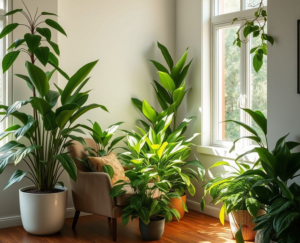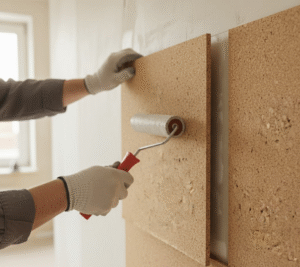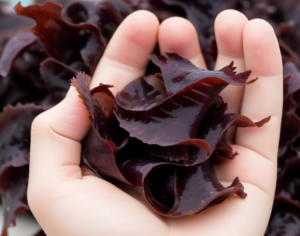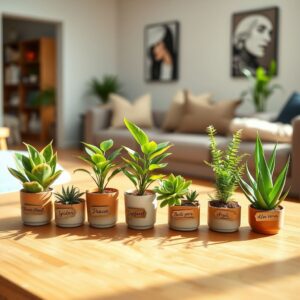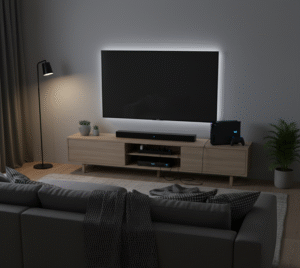The Beautiful Things That Are Silently Destroying the Planet
Look around your home. That framed print, the wood shelf, the stretched canvas – they look harmless. They do more than sit pretty. Timber from distant forests, finishes that off-gas, finishes you never meant to invite into your air. It adds up.
Now imagine a piece of wall art that does the opposite. Imagine something that came from a living place and gives back. Sustainable seaweed wall art is not a gimmick. It’s a choice that quietly changes the math of design.

The Unexpected Hero: Why Seaweed Is the Material Designers Are Falling in Love With
Seaweed grows fast. No fertilizer, no fresh-water demand, lots of carbon uptake as it spreads – that’s part of why people in marine restoration are farming it. If you want the short term benefit, look into marine permaculture projects – they are real and practical.
But beauty is the other reason. Press it, dry it, weave it and the stuff changes – texture, translucence, color shifts you can’t fake. Designers like Julia Lohmann have been treating seaweed as a full-on design material, not a novelty.

From Shoreline to Showpiece: How Seaweed Becomes Art
Here’s the short workflow: ethical harvest, careful cleaning, pressing or stabilizing, then framing or laminating. The good makers always leave enough behind so the shore keeps growing what they took.
Some pieces are pressed under glass like botanical prints. Some are embedded in clear binders or natural resin. If a seaweed piece looks plasticky or smells chemical, walk away. Real pieces keep the veins, the brittle edges, the subtle fade from centre to margin.

The Aesthetic Edge: What Makes Seaweed Wall Art Visually Addictive
This is not loud art. It whispers. Thin fronds overlap. Light moves through some parts and stops at others. You see depth, even though it’s flat. That strange little illusion keeps the eye traveling.
Minimalist rooms love this because it fills a space without shouting. It’s tactile-looking even when it’s behind glass. People walk past and slow down. That pause is selling on its own.

Sustainability You Can Actually See
Think practical. A mass-produced canvas can carry petrochemical coatings, long supply chains, energy in manufacture. A reclaimed wood frame might still be sealed with a synthetic varnish.
Seaweed pieces, when done properly, often use local or regional harvests, low-energy drying, and materials you can compost or recycle at the end of life. Designers and material researchers are testing seaweed panels and composites for interiors – beyond art, there’s building use for this biomass.
Hanging one of these pieces is not virtue signaling. It’s a visible, physical choice you can point to when someone asks what you care about.
The Dark Side of Decor: What Happens When You Don’t Choose Sustainable Art
I’ll be blunt – non-sustainable decor keeps adding to a slow problem. Frames in landfill, finishes that release chemicals over years, tiny fibres that become microplastic in your home. It’s not like a single item will ruin everything, but the sum of many small choices matters.
Think of your living room: a safe place that quietly participates in that cycle, or a place that reduces harm. Your pick.

Real Creators, Real Change: The Makers Behind the Movement
Makers are small and stubborn – in the best way. They forage responsibly, they test natural binders, they experiment with seaweed inks and textiles. These are folks who describe their practices, who will tell you exactly where the seaweed came from.
There are art projects and challenges where seaweed ink and kelp pigments are used on purpose – and those projects push both craft and public attention. That’s how a niche idea moves into the mainstream: one careful experiment at a time.

How to Choose or Make Your Own Seaweed Wall Art
Small checklist for buyers – ask these plainly: where was the seaweed harvested, how was it preserved, what chemicals (if any) were used. Prefer makers who publish their methods.
If you want to try DIY – forage only where legal, press between blotting paper or plain paper towels, weigh it down and let it dry slowly. Frame under glass or use a natural resin. Store away from strong sun.
The DIY route is a bit messy and charming. It will teach you about the material in ways a store-bought piece never will.

The Future: From Ocean Waste to Ocean Wonder
This isn’t a one-off trend. The research into seaweed composites for walls, insulation, and panels is ongoing. Designers want materials that can be grown, that sequester carbon, that have a smaller footprint.
If you like being early, this is a good place to stand. If you want long-term design thinking in your home, seaweed-based materials look promising. The sea might soon supply more than edibles and art – it could supply actual living building materials.

A Small Choice That Actually Matters
What your walls say about you matters. Not in a loud way, but subtly. When you choose sustainable seaweed wall art you choose something that looks good and does less harm. That’s rare.
Pick a piece that stops conversation, not because it shouts, but because it suggests you think about where things come from. That’s a small rebellion. And it starts on your wall.
